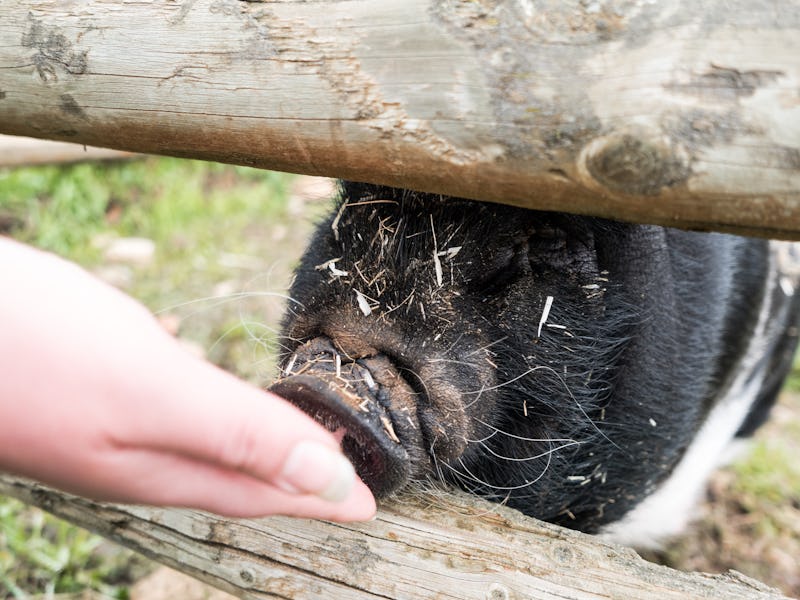Pig Virus Makes Unexpected, Problematic Leap Into Human Cells
This could be the next big livestock disease.

A disease that affects pigs could potentially spread to humans and other animals, a new study shows. Scientists first identified the porcine deltacoronavirus (PDCoV) in Hong Kong in 2012, and in the years since, farmers and scientists have found it in Canada and in the United States, too. While scientists have said the virus isn’t a human health concern, it turns out that might not be the case.
In a paper published Monday in the journal Proceedings of the National Academy of Sciences, researchers demonstrated that the virus could infect human cells as well as the cells of cats and chickens. Even though PDCoV appears to be limited to pigs at the moment, scientists suspect that its sudden appearance in 2012 occurred as a result of a rapid “host switching” event in which the virus adapted to infect pigs, possibly from birds. It causes diarrhea and vomiting in pigs and can be fatal, especially in nursing young. The virus’s probable history, coupled with some specific aspects of how it infects cells, has scientists worried that it could become a threat to human health.
In tests on lab-grown cells of humans, cats, pigs, and chickens, researchers found that the virus infects a host’s cells via a specific receptor called aminopeptidase N. When a virus attacks an organism, it does so through a protein receptor. And if it can get through that receptor, it can get into the organism. The important thing about aminopeptidase N, though, is that it’s not unique to pigs. This aspect of the viral infection suggests that PDCoV, like severe acute respiratory syndrome (SARS) and Middle-East respiratory syndrome (MERS), which are also coronaviruses, could soon cross host populations.
“Binding of PDCoV to an interspecies conserved site on [aminopeptidase N] may facilitate direct transmission of PDCoV to nonreservoir species, including humans, potentially reflecting the mechanism that enabled a virus, ancestral to PDCoV, to breach the species barrier between birds and mammals,” write the study’s authors. There’s not yet cause for alarm, but the fact that this virus has been infecting pigs and seems to be capable of infecting humans has researchers worried.
“We’re very concerned about emerging coronaviruses and worry about the harm they can do to animals and their potential to jump to humans,” Linda Saif, Ph.D., a distinguished professor of veterinary medicine at Ohio State University and senior author on the study, said in a statement. Between 2002 and 2003, SARS killed 774 people worldwide, and MERS has killed 787 people since 2012. So we’re not looking at some kind of global pandemic, but it’s a situation that veterinary scientists will surely be keeping a sharp eye on in the coming months.
While this is just a study of body cells and not actual, living host organisms, these results are preliminary. But as the study’s authors point out, the evidence for a new host-switching event is strong: “Receptor interaction is the first, essential step in virus infection of the host cell, and hence the key factor in defining a host range of viruses.”